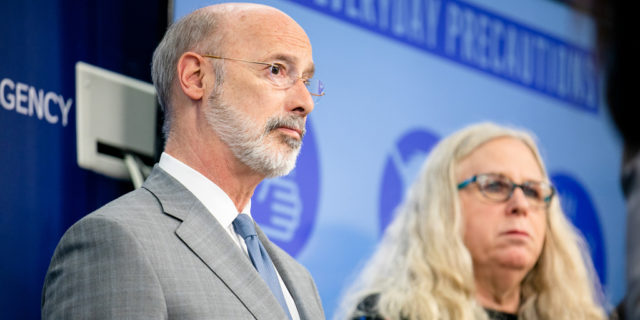Governor Tom Wolf announced today that Dr. Rachel Levine, under her authority as Secretary of the Department of Health to take any disease control measure appropriate to protect the public from the spread of infectious disease, signed an order directing protections for critical workers who are employed at businesses that are authorized to maintain in-person operations during the COVID-19 disaster emergency.
“This order provides critical protections for the workers needed to run and operate these life-sustaining establishments,” Governor Wolf said. “Businesses across the state have already begun to implement many of these protocols on their own, and we applaud their efforts to protect employees and customers.”
“This order will ensure continuity across all life-sustaining businesses and will further our efforts to protect the health and safety of all Pennsylvanians,” Dr. Levine said. “Together, we can all help mitigate the spread of COVID-19.”
The order establishes protocols to help employees maintain a social distance during work:
- Provide masks for employees to wear during their time at the business, and make it a mandatory requirement while at the work site, except to the extent an employee is using break time to eat or drink, in accordance with the guidance from the Department of Health and the CDC. Employers may approve masks obtained or made by employees in accordance with this guidance;
- Stagger work start and stop times for employees when practical to prevent gatherings of large groups entering or leaving the premises at the same time;
- Provide sufficient space for employees to have breaks and meals while maintaining a social distance of 6 feet, including limiting the number of employees in common areas and setting up seating to have employees facing forward and not across from each other;
- Conduct meetings and training virtually. If a meeting must be held in person, limit the meeting to the fewest number of employees possible, not to exceed 10 employees at one time and maintain a social distance of 6 feet.
- Ensure that the facility has a sufficient number of employees to perform all measures listed effectively and in a manner that ensures the safety of the public and employees;
- Ensure that the facility has a sufficient number of personnel to control access, maintain order, and enforce social distancing of at least 6 feet;
- Prohibit non-essential visitors from entering the premises of the business; and
- Ensure that all employees who do not speak English as their first language are aware of procedures by communicating the procedures, either orally or in writing, in their native or preferred language.
Upon discovery of an exposure to a person who is a probable or confirmed case of COVID-19, businesses are also ordered to implement temperature screenings before employees enter the business prior to the start of work and send any employee home who has an elevated temperature of 100.4 degrees Fahrenheit or higher. Sick employees should follow CDC-recommended steps. Employees should not return to work until the CDC criteria to discontinue home isolation are met, in consultation with the health care providers and state and local health departments. Employers are encouraged to implement liberal paid time off for employees who are on home isolation.
Upon an exposure, businesses are also ordered to do the following:
- Close off and ventilate areas visited by that individual;
- Wait a minimum of 24 hours, or as long as practical, before beginning cleaning and disinfection;
- Clean and disinfect all spaces, especially commonly used rooms and shared electronic equipment;
- Identify and notify employees who were in close contact with that individual (within about 6 feet for about 10 minutes); and
- Ensure that the business has a sufficient number of employees to perform these protocols effectively and immediately.
In addition to the social distancing, mitigation and cleaning protocols, businesses that serve the public within a building or defined area are ordered to implement the following, based on the size of the building and number of employees:
- Require all customers to wear masks while on premises, and deny entry to individuals not wearing masks, unless the business is providing medication, medical supplies, or food, in which case the business must provide alternative methods of pick-up or delivery of goods, except individuals who cannot wear a mask due to a medical condition (including children the age of 2 years) may enter the premises without having to provide medical documentation;
- Conduct business with the public by appointment only and, to the extent that this is not feasible, limit occupancy to no greater than 50 percent of the number stated on their certificate of occupancy as necessary to reduce crowding in the business and at check-out and counter lines in order to maintain a social distance of 6 feet, and place signage throughout each site to mandate social distancing for both customers and employees;
- Alter hours of business so that the business has sufficient time to clean or to restock or both;
- Install shields or other barriers at registers and check-out areas to physically separate cashiers and customers or take other measures to ensure social distancing of customers from check-out personnel, or close lines to maintain a social distance between of 6 feet between lines;
- Encourage use of online ordering by providing delivery or outside pick-up;
- Designate a specific time for high-risk and elderly persons to use the business at least once every week if there is a continuing in-person customer-facing component;
- In businesses with multiple check-out lines, only use every other register, or fewer. After every hour, rotate customers and employees to the previously closed registers. Clean the previously open registers and the surrounding area, including credit card machines, following each rotation;
- Schedule handwashing breaks for employees at least every hour; and
- Where carts and handbaskets are available, assign an employee to wipe down carts and handbaskets before they become available to a new customer.
Failure to comply with these requirements will result in enforcement action that could include citations, fines, or license suspensions. Compliance with the order will be enforced beginning Sunday, April 19 at 8:00 PM.
The governor has directed the following state agencies and local officials to enforce orders related to the COVID-19 pandemic to the full extent of the law:
- Pennsylvania Liquor Control Board
- Department of Health
- Department of Agriculture
- Department of Labor and Industry
- Pennsylvania State Police
- Local officials, using their resources to enforce closure orders within their jurisdictions
“It is vital that we require businesses to practice these common-sense and scientifically proven safety protocols for the protection of workers and the public at-large. And that is what this order does,” said state Senator Tina Tartaglione, Democratic chairwoman of the Senate Labor and Industry Committee. “Many of the measures included in this order were part of legislation that I proposed. I applaud this swift action by Secretary Levine and Governor Wolf to implement these much needed protocols.”
This order follows another order by Dr. Levine providing direction for maintaining and cleaning buildings for businesses authorized to maintain in-person operations under her and Governor Tom Wolf’s life-sustaining business orders announced March 19.
Governor Tom Wolf also recommends that Pennsylvanians wear a mask any time they leave their homes for life-sustaining reasons.
View Secretary Levine’s order as a PDF here or on Scribd.
For the most up-to-date information on COVID-19, Pennsylvanians should visit https://www.pa.gov/guides/responding-to-covid-19/.








